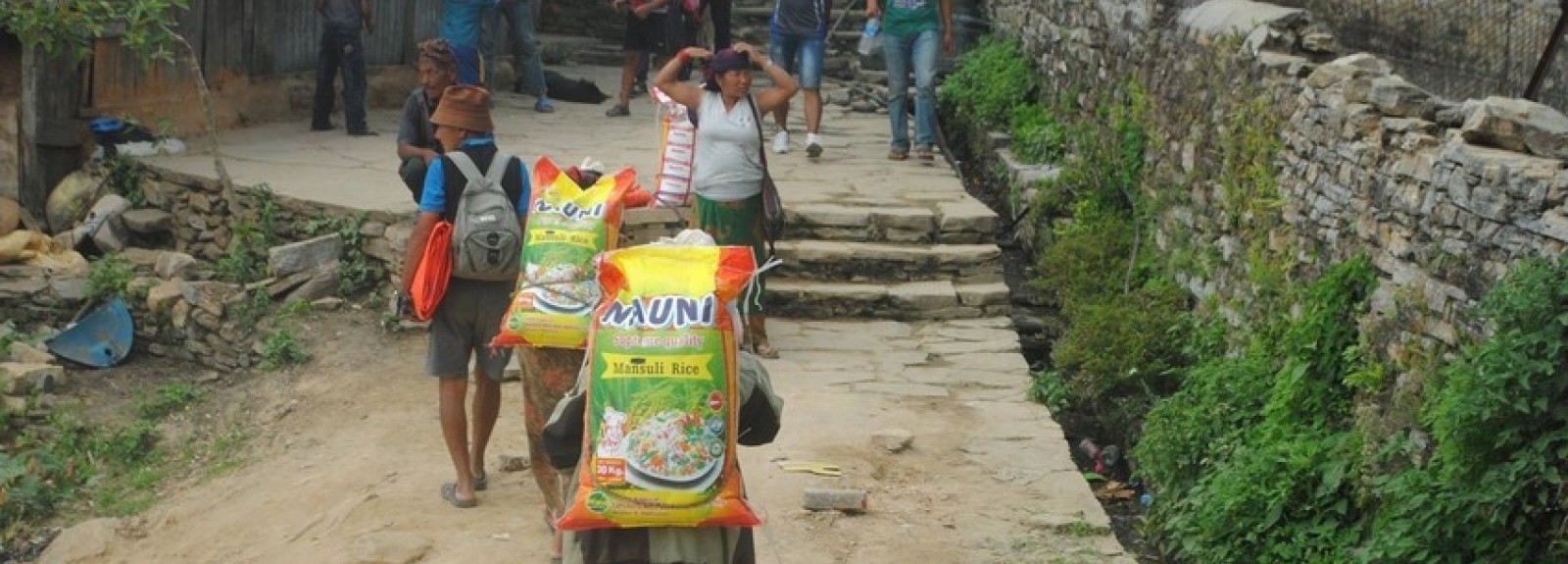LWR has a long history of development programming aimed at building the resilience of vulnerable communities affected by multiple shocks and stressors, such as natural disasters, conflict, and climate change and variability. This blog series, Reflections on Resilience, will examine emerging issues, innovative approaches and new resources in resilience work. It seeks to stimulate learning, reflection and dialogue among development practitioners, researchers and decision-makers interested in the linkages between resilience and development practice. Read part one. Read part two.
On April 25th, a devastating earthquake changed the lives of millions of Nepalese people. As we start to come to terms with the loss and devastation that has taken place, remarkable relief and recovery efforts are underway. Stories emerge every day as testimonies to human endurance, and evidence of the vital role collaboration plays in the pursuit of recovery and development.
In the aftermath of this disaster, how is the concept of “resilience” helpful?
Resilience is about strengthening local capacities.
Building resilience strengthens the ability of individuals, communities and/or institutions to better cope with shocks and adapt to change. Participatory methods[1] that seek to improve community groups’ access to knowledge, and that help these groups mobilize in pursuit of their own development priorities, are closely linked to resilience.
Accountability and transparency are integral to building local trust, fostering local engagement, and strengthening the communities’ ability to self-organize. After Nepal’s earthquake, LWR’s Technical Advisor for Emergency Capacity Building completed a two-day training with our long-term partner COPPADES. This training focused on how international humanitarian standards can be used during emergencies to improve the quality of programs, and improve accountability to our beneficiaries and other stakeholders.
Participatory assessments and vulnerability mapping with community members are two methods used as part of resilience initiatives. These methods will play a crucial role as relief and livelihood recovery efforts move forward in Nepal. For example, LWR — in close collaboration with local NGOs — conducted a household-level needs assessment to identify the most urgent needs and form baseline data.
Resilience focuses both on short-term coping and on long-term transformation.

Resilience is not only about surviving the impacts of a disaster, it is about improving the long-term quality of life of those who are most vulnerable. This involves improving communities’ ability to mitigate and respond to immediate shocks like earthquakes or floods, as well as to adjust to long-term change, such as seasonal or temperature changes that affect the productivity and/or viability of their crops.
Nicole Hark, LWR’s Deputy Regional Director, Asia & the Middle East, explains the importance of thinking about the long-term implications of natural disasters on local livelihoods:
“The catastrophe in Nepal disrupted agricultural cycles. When the earthquake hit, the growing season was already underway. Now the planting and harvesting seasons have been disrupted, threatening the main livelihood of rural communities, and posing new challenges to food security. In this regard, LWR’s support will complement disaster risk reduction (DRR) activities with livelihood strengthening, including seed and livestock provision.”
Focusing on resilience allows us to think about immediate relief and transitional needs (such as food and shelter). But it is also about recovering livelihoods and rehabilitating communities over time. Maintaining a long-term perspective is key when working in post-disaster settings. We must ensure that interventions contribute to sustainable growth.
Resilience requires collaboration among stakeholders at multiple levels (local, regional, national and international levels).
Building resilience allows us to design, implement and assess our work from a more holistic, system-wide perspective. A key component of this broader lens is to acknowledge that in order to effectively respond to complex development challenges, there must be collaboration across sectors, and collaboration from the local to the international level.
Umer Khan, LWR’s Senior Director for Emergency Operations, explains:
“LWR is working in close coordination with the UN-OCHA cluster mechanism, the Nepal Red Cross, the Government of Nepal, other NGOs and UN agencies. We are active participants of the Food, Shelter, and Early Recovery clusters to ensure that our efforts are coordinated. This collaboration has been crucial for an effective response, and to avoid duplication of efforts."
Communities in rural areas of Nepal are dealing with limited accessibility and difficult transportation due to the avalanches and landslides caused by the earthquake and its numerous aftershocks. Addressing these challenges requires close coordination among communities, government bodies and multi-lateral organizations.
There are many valuable lessons that will continue to emerge as the international community’s efforts to support Nepal move forward. These efforts provide us with a valuable opportunity to “bridge the gap” between short-term responses and long-term development strategies.
Resilience approaches can be useful to address this gap. Participatory approaches and community engagement help ensure that interventions are meaningful and relevant. And effective collaboration among actors from different sectors helps ensure that interventions are sustainable in the long-term.
Building resilience provides us with an opportunity to strengthen vulnerable populations’ (women and men, girls and boys) ability to withstand shocks and better navigate an uncertain future.
[1] Olwig, M. (2012). Multi-sited Resilience: The mutual construction of “local” and “global” understanding and practices of adaptation and innovation, Applied Geography 33 (2012), p. 112-118.


